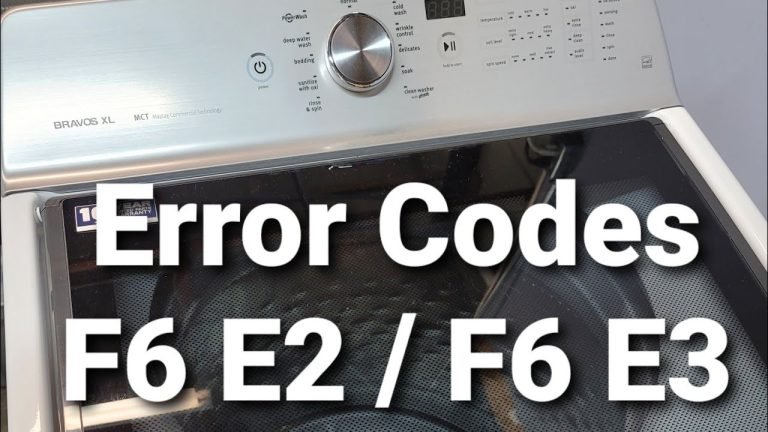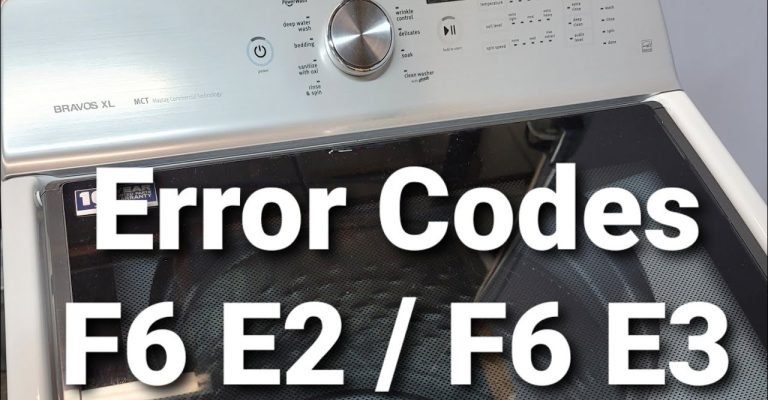
Imagine your washing machine as a choreographed dance of parts—all moving together in perfect sync to clean your clothes. When one piece falls out of step, Error Code E2 might be the machine’s way of saying, “Hey, something’s off here!” Essentially, this code is an alert indicating that the washer’s drum isn’t spinning as it should. From issues with the motor to simple obstructions, several factors might be causing this problem. Let’s break it down step by step so you can get back to your laundry without pulling your hair out over technical jargon.
Understanding What Error Code E2 Means
Error Code E2 can be quite the head-scratcher if you’ve never faced it before. In simple terms, this code indicates a problem with the drum’s movement. Think of the drum like a merry-go-round; if it doesn’t spin, your clothes can’t get their much-needed rinse and spin cycles. But what causes this fun ride to stop?
First off, a motor issue could be the culprit. The motor powers the drum, so when it’s not working correctly, the drum won’t move as expected. It’s like trying to ride a bike with a rusty chain; you’re not going anywhere fast. This issue might occur due to wear and tear, overheating, or even a power surge that temporarily fries the motor’s circuits.
Next, let’s talk about imbalances in the load. It’s akin to trying to spin a lopsided pizza dough—the uneven weight can mess things up. If the washer senses an unbalanced load, it will stop spinning to prevent any damage. So, if you’ve got a comforter mixed with a few t-shirts, it might be time to redistribute that load.
Finally, there could be a drainage problem. If water isn’t draining correctly, the machine might refuse to spin as a safety precaution. This is like trying to empty a bathtub without unplugging the drain; you end up with a lot of splashing and no real progress. Understanding these causes will help you pinpoint what to check first.
How to Fix Error Code E2
Alright, so you’ve got Error Code E2 staring you down. What next? Let’s walk through some simple solutions.
Firstly, examine the load. Open up your washer and take a look inside. Are there too many clothes in one corner? Is a heavy item pushing everything else aside? If so, balance out the load. This often fixes the problem right away. Remember, even distribution is key to a smooth spin cycle.
If the load seems fine, your next step should be to inspect the drain pump. Check for blockages that might be causing water to back up. Clear any debris or lint you find and see if the problem resolves. Much like clearing leaves from a gutter, a little maintenance can go a long way.
Finally, if you’re not seeing results, consider resetting the machine. Unplug it for a few minutes and then plug it back in. This sometimes resets the system, clearing minor glitches. If the error persists, it might be time to call in the pros. There could be a deeper issue with the motor or the control board that requires an expert’s touch.
Preventing Error Code E2 in the Future
Nobody wants to deal with error codes more than once, so let’s talk prevention. One of the easiest ways to prevent Error Code E2 is to avoid overloading the machine. Always follow the recommended load sizes for your model; it’s in the manual for a reason.
Regular maintenance checks can also help. Clean the detergent drawer and the drum frequently to prevent build-up that might affect the machine’s performance. Think of it like taking your car in for an oil change—it keeps everything running smoothly and minimizes the chances of unexpected hiccups.
Lastly, if you live in an area with hard water, consider investing in a water softener. Hard water can contribute to the build-up of minerals in your washer, affecting its efficiency over time. This is akin to keeping your drinking water clean to ensure your body functions at its best.
There you have it! By understanding what Error Code E2 means and how to address it, you’ll be equipped to keep your Maytag washing machine running smoothly. Remember, a little troubleshooting and regular maintenance can go a long way in extending the life of your appliance.
